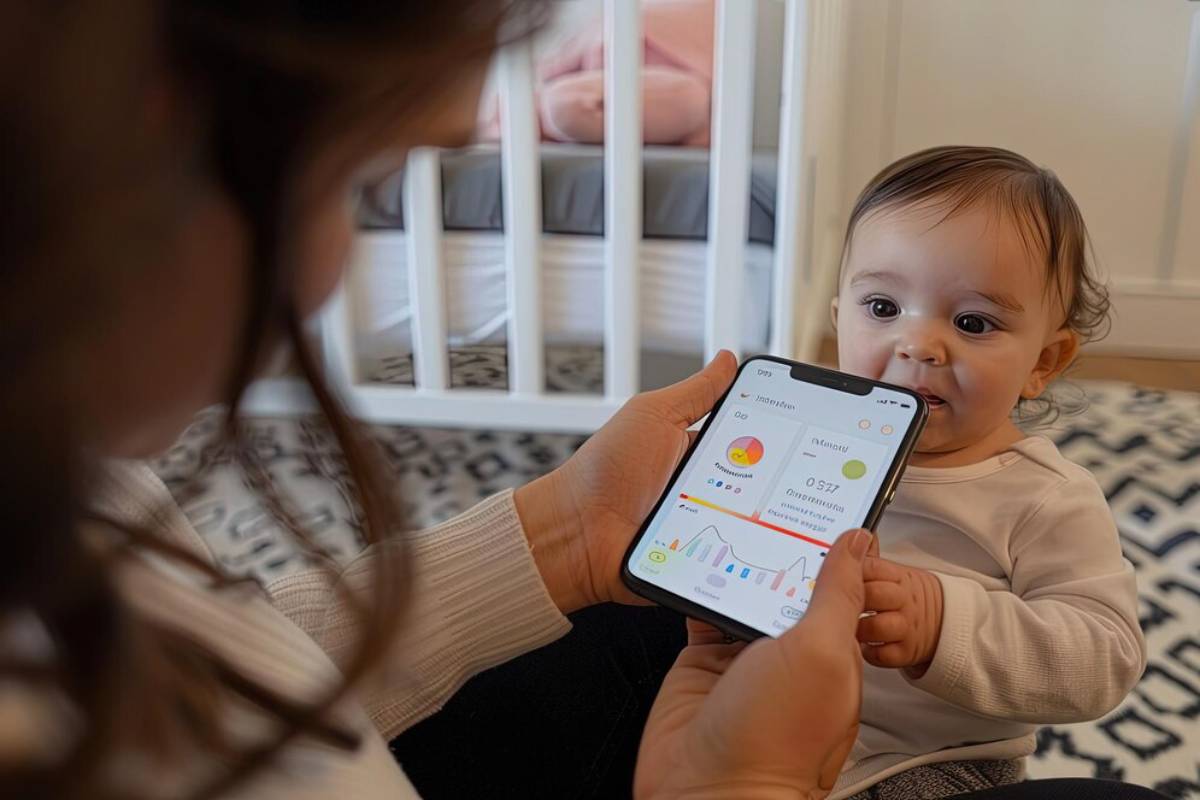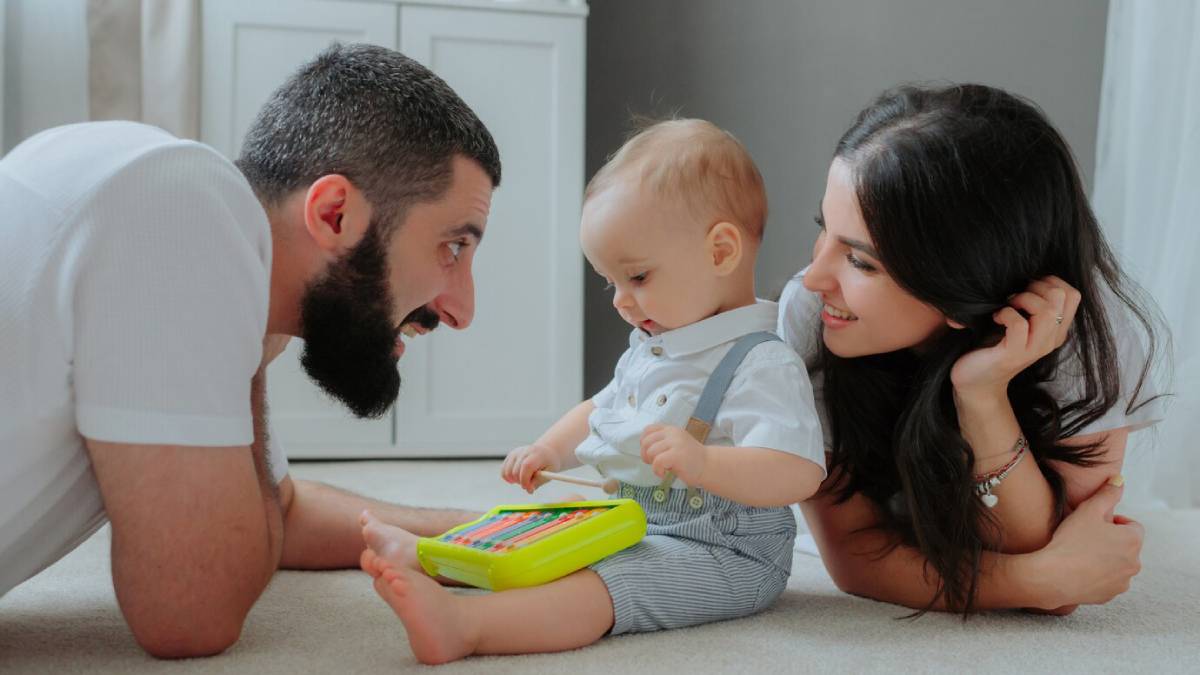
Tracking Your Baby’s First Year Milestones
Welcoming a new baby is a joyous moment. It’s joyful, wondrous and full of questions. Watching your baby grow is one of the best things about starting this journey. Milestones in the first year are essential markers in your baby’s that provide you with insights into their development. It also shows you what stages of a baby’s development to look out for. This guide will help you travel this first magical year together with tips and tricks to tackle.
Why Tracking Baby Development Stages Matters?
Knowing and tracking your baby’s milestones is essential for many reasons. First, it will help ensure your child develops at a healthy rate. Every milestone is an achievement, from the first smile to the first step. Second, understanding these stages enables you to alert yourself to any potential issues before they become real problems. In this way, you can ask for the necessary help.
The Importance of Infant Growth Charts
The best way to track your baby’s physical development curious, active is with infant growth charts. These charts visually represent your baby’s growth compared with standard data. You can monitor your baby’s progress by regularly noting their weight, length, and head circumference.
Growth charts also aid conversations with healthcare professionals. They provide precise data that helps your paediatrician determine if your child is growing as expected.
Infant Growth Chart for the Year
The first year of a baby’s life is full of rapid growth. Here are some key milestones to watch for:
0-3 Months: Building Foundations
Your baby establishes itself in the first three months. They will focus on faces, respond to sounds, and start to smile. These early months provide the building blocks for future development.
- Motor Skills: Your baby may lift their head while on their tummy and make jerky arm movements.
- Social and Emotional: They may smile in response to your smile or voice, marking the start of social interaction.
- Cognitive Development: Your baby will follow objects with their eyes and recognise familiar faces.
4-6 Months: Exploration Begins
Then, the active exploration phase starts. Your baby is learning more about the world around them and honing motor skills.
- Motor Skills: Rolling over, sitting with support, and reaching for objects are shared.
- Social and Emotional: Babies start recognising familiar people and are curious about new faces.
- Cognitive Development: Increased attention span and interest in toys and objects emerge.
7-9 Months: Becoming Mobile
As your baby grows, they become more mobile and curious about the world.
- Motor Skills: Significant milestones include crawling, sitting without support, and pulling up to stand.
- Social and Emotional: Babies may show separation anxiety and cling to familiar caregivers.
- Cognitive Development: They begin to understand object permanence and enjoy games like peek-a-boo.
10-12 Months: First Steps and Words
Your baby will show signs of independence and communication as they near their first birthday.
- Motor Skills: Standing alone, taking first steps, and possibly walking.
- Social and Emotional: Engaging in simple play and imitating gestures.
- Cognitive Development: Responding to simple spoken requests and recognising names of familiar people or objects.
Tips for Supporting Your Baby’s Development
To support your baby’s growth, consider these advance tips:
Encourage Tummy Time
Tummy time is vital to develop your baby’s neck and shoulder muscles. It encourages the development of gross motor skills and can also help prevent flat spots on the head. Aim for short, supervised sessions several times a day.
Foster a Stimulating Environment
Create a space that encourages exploration and learning. Use age-appropriate toys that stimulate your baby’s senses and promote cognitive development. Simple toys like rattles, mirrors, and textured books work well.
Communicate and Interact

Talk to your baby often to boost language development. Narrate your activities, read books, and sing songs. They absorb language patterns and sounds even if they don’t understand everything.
Maintain a Routine
A consistent routine provides security and predictability for your baby. Regular feeding, sleeping, and playtimes help them feel safe and understand what to expect.
Common Mistakes and Misconceptions
Be aware of these common mistakes when tracking your baby’s milestones:

Comparing Your Baby to Others
Every baby is unique, and development can vary widely. Avoid comparing your baby’s progress to others. Instead, focus on their individual growth and achievements.
Overemphasising Milestones
While milestones are important, they aren’t the only signs of your baby’s health. Pay attention to your baby’s overall well-being and happiness.
Ignoring Your Instincts
If you have concerns about your baby’s development, trust your instincts and seek advice from a healthcare professional. Early intervention can be crucial for addressing potential issues.
Embrace the Journey
The first-year milestones of your child’s life are a delightful roadmap. They provide some insight into their growth and development. Knowing about these stages and other tools like growth charts helps ensure your baby thrives.
Remember that every baby is different and develops at their own pace. Acknowledge every success, no matter how small. Savour the sweet moments of your baby’s first year. If you’ve got concerns, contact a healthcare provider for advice.
Embrace the journey with love and patience. Watch your baby grow into a curious, active toddler. What milestones is your baby currently achieving? Share your experiences and connect with other parents on this incredible journey.